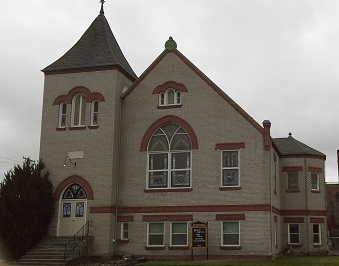Sermon for May 12, 2013
by Pastor Peggy Ray
Spiritual
Reality
There’s a saying I know you’re familiar
with, The more we know, the more we realize
we don’t know. That wisdom is particularly applicable to our understanding
of today’s Scriptures.
For several centuries, we, humans, have
been operating under the assumption that the universe functions according to physical
laws that can be known. Our growing understanding of these physical laws led to
great material progress. But it also had some unfortunate consequences. Stories like the Ascension came to be
viewed as just too outrageous for educated, modern, cause-and-effect folks to
take seriously. They assume that in order for the Ascension to make sense
we need to embrace the three-story universe of the Bible. This reminds me of the
Soviet-era cosmonaut who returned successfully from a mission in space and
declared that he didn’t find God “up there” and thus all religion must be false. If we insist on operating within this
framework, then our witness to the Gospel will limp along and have very little
impact on others.
But, in the last couple of decades, science
has moved way beyond the assumption that the universe functions according to the
physical laws we know. Scientist now believe that only 4% of the total universe operates according to the laws of our
three dimensional world. 96% of the
universe is composed of what scientists call “dark” energy (70%) and
“dark”
matter (20+%). All
“dark” means is that we know zilch, nada, nothing about 96% of our
universe. The universe is far more
surprising and mysterious than we previously believed.
I start with this because when people
object to the idea that there is more beyond our tangible,
provable-with-hard-evidence observations and experiences of the world, they
aren’t taking the entire universe into account. When they assume that faith and
science are either/or points of view, they are operating under an outdated understanding of reality as
consisting only of our three-dimensional physical world. But string theory
suggests the reality is not 3-dimensional but 4, or 5, or even 6 or 7 dimensional.
In Jesus’ post-resurrection appearances, he
enters a room suddenly, without using a door; he appears next to a couple
walking together on the road to Emmaus; he cooks breakfast for Peter and his
friends by the shore. But he disappears just as suddenly as he appears. Clearly
though the resurrected body of Jesus is visible, it demonstrates qualities that
are not limited to our three-dimensional reality.
Imagine! Suppose God exists outside of our
three-dimensional reality, outside of time, in a dimension beyond the physical
world. If that is true then the description of Jesus’ return to the Father is
totally credible. More importantly, We don’t have to choose between
science and faith! Science and faith are
no longer either/or. Science and faith can both agree that
there is a reality beyond the three-dimensional
world of physical reality. In a 4 or more dimensional world, the Bible’s
affirmations that God is beyond all limitations of time and space; God
is unchanging and all-powerful; God is majestic and sovereign and eternal;
these affirmations make sense. And perhaps the Bible and mystics are right that there is a reality where God
reigns, and where God heals and makes all things new again.
Jesus had
risen from the dead, eaten fish with his disciples, walked with them up to
Mount Olivet. Jesus had continued to teach them from the law, the psalms, and
the prophets. Suddenly he was lifted up and carried away on the clouds. Going
back to glory! Hallelujah! Jesus is Lord. To proclaim Jesus’ ascension
is to claim that God has exalted him -- the same Jesus who welcomed the
sinners, who suffered and died in shame and rejection by this world -- as Lord
and Messiah (2:36). Jesus is God’s promise and plan for the whole world.
Jesus’ ascension alters our picture of God. God is NOT completely detached from our human
experience. The Jesus, who sits at God’s right hand, reveals a God who is
vulnerable and approachable, who knows loneliness, betrayal, rejection, thirst,
and even death. So, when we turn to God in times of distress or temptation, we
are not turning to a God unfamiliar with our struggles. God knows our trials
and comforts us.
Even more importantly, God is here! God is everywhere! God can be found all around
you—in each person that touches your life, in every living creature, in the
splendor of all Creation. God is the
beauty in a little flower. God is in the warm rays of sun in winter, the
radiance of new-fallen snow, and the magnificent design of a snowflake. God is
the joy of friendship and the love that thrills the human heart.
The last few verses of Luke’s Gospel are
filled with blessing. Jesus takes his disciples out of the city and blesses
them. As he blesses them, he departs. Which
is interesting. You’d think that Jesus would finish blessing them and then
depart. But Luke says that, “while
he was blessing them, he withdrew from them and was carried up into heaven.”
Almost as if he just couldn’t stop blessing them. Or that his blessing doesn’t end with his presence, but continues. Or that his blessing of them and all
disciples never ends. Jesus’
ascension, then, isn’t about his leaving – his disciples, us, the world – but
rather is about God being accessible to us. God is always seeking to break
through the locked doors of our lives, anywhere and anytime.

No comments:
Post a Comment